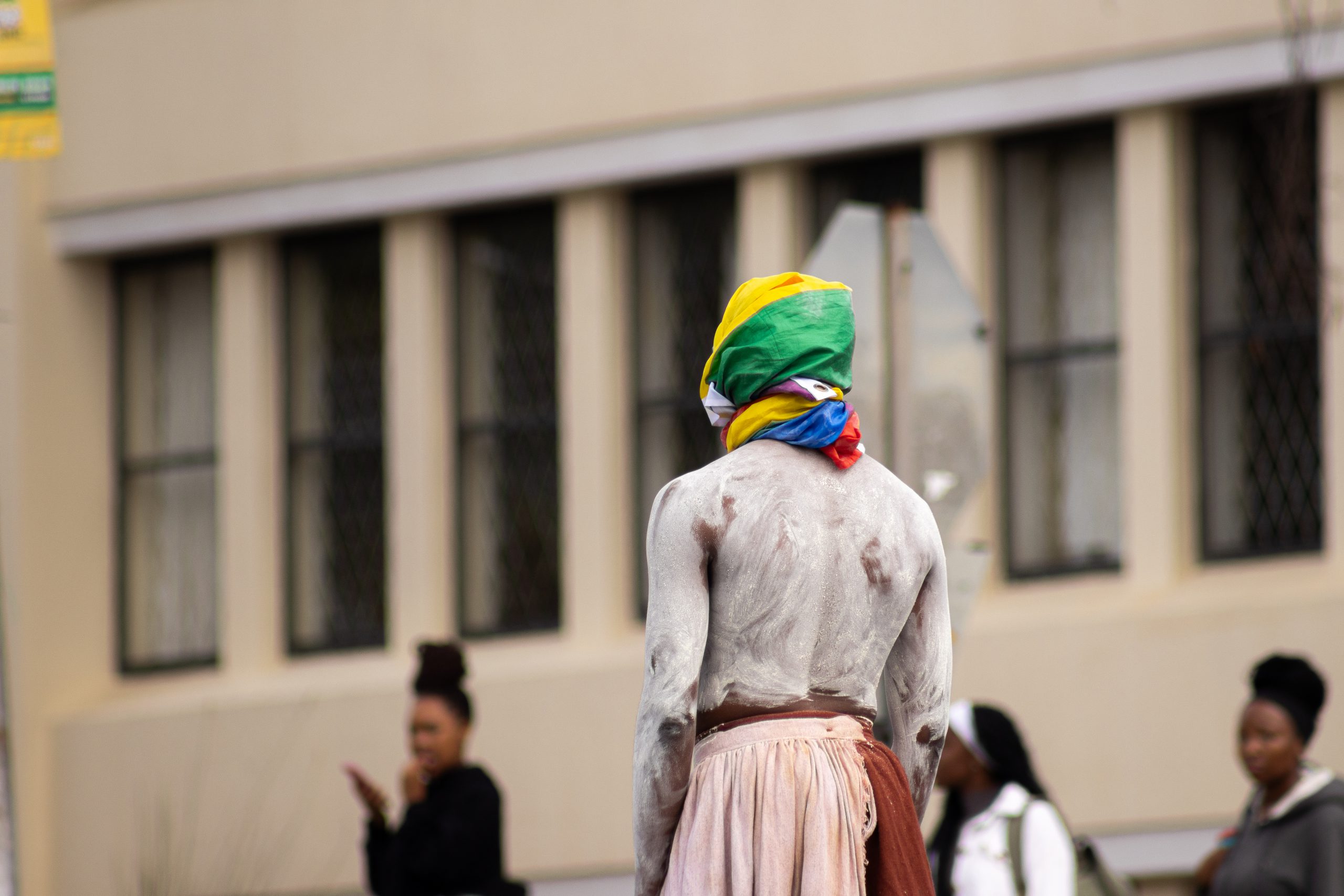By Rikie Lai
Recently, Makhanda residents witnessed a powerful demonstration by Art History student Sange Mpambani outside the Rhodes University Drama Department. Sange defines these demonstrations as “interventions”, which started in 2023 and were inspired by the 2016 #RUReferenceList protests.
Cape Town-born Sange holds a Bachelor of Arts degree in Drama and Art History and is pursuing an honours degree in Art History and Visual Culture. Sange defines themselves as an interdisciplinary artist with a background in performance. The research being done currently by Sange is the roles and contributions of Black women and Queers in student movements between 2015 and 2017.
The 2016 RU Reference list protests came about when students released a list of names of alleged rapists at Rhodes University anonymously on the RU Queer Confessions, Questions and Crushes page. During the 2016 protests, students took to the streets and held naked demonstrations. Sange describes this aspect and other naked protests and: “How they shifted the view of women’s bodies”.

These 2016 protests were aimed at standing against the rape and sexual harassment within Rhodes University. This intervention paid tribute to the countless individuals who stood up against rape culture so they could ensure their safety and that of other women.
Sange told Grocott’s Mail that their artistic intervention occurred in response to something that grabbed their attention within their research and was spontaneous without an invite due to the nature of the response towards their studies.
Sange says that they demonstrated that the culture at Rhodes was not tolerable. This intervention was in memory of those who stood bravely against rape culture and for the safety of victims of rape culture.
In his art movement piece, Sange has highlighted the focus of Black women and Queer individuals, their roles and contribution toward students’ movements such as the #RUReferenceList and will, through their performance interventions, allow those who observe to draw their feelings and interpretations towards these interventions as different emotions and feelings can be triggered through various perspectives of Sange’s interventions.



